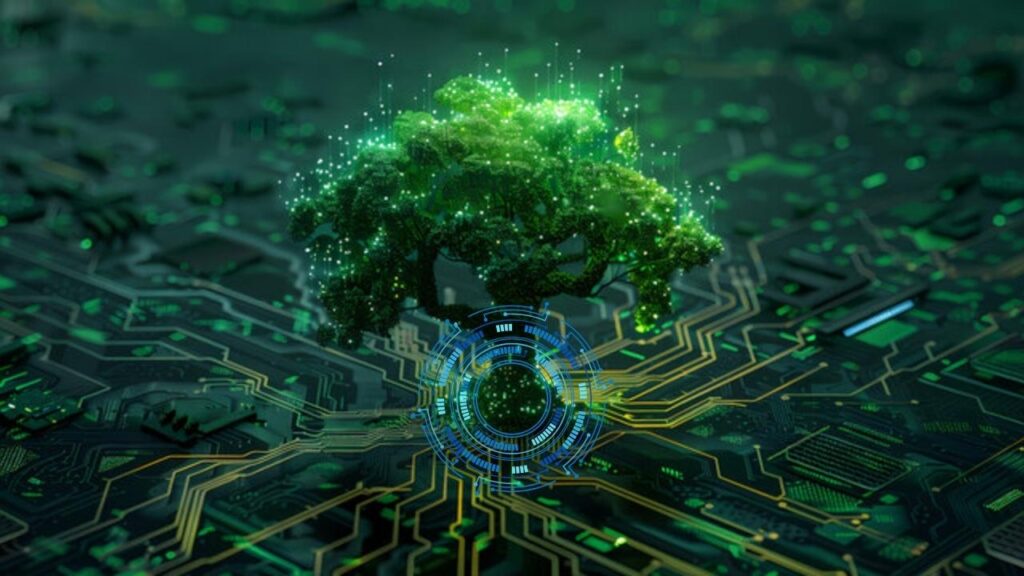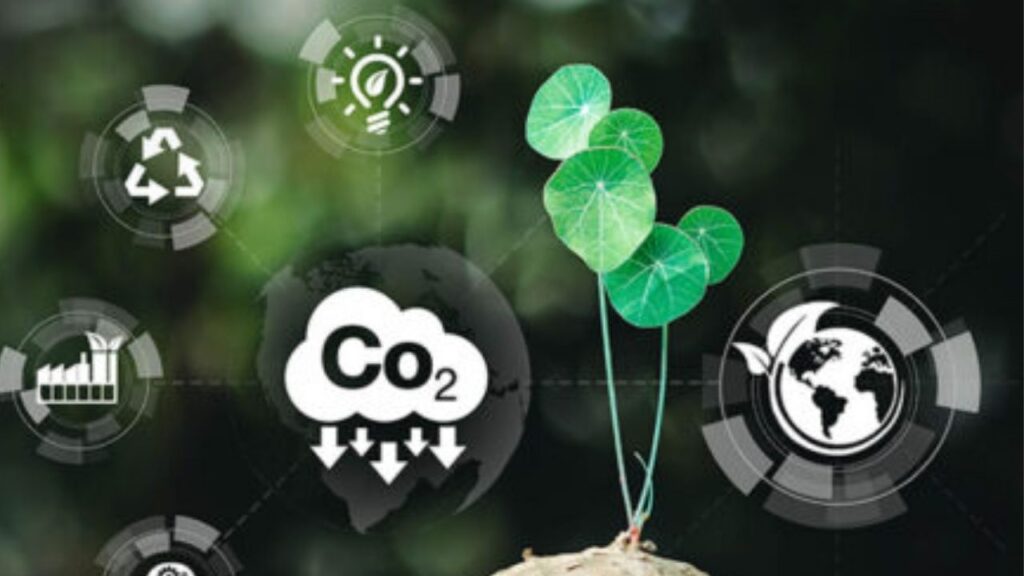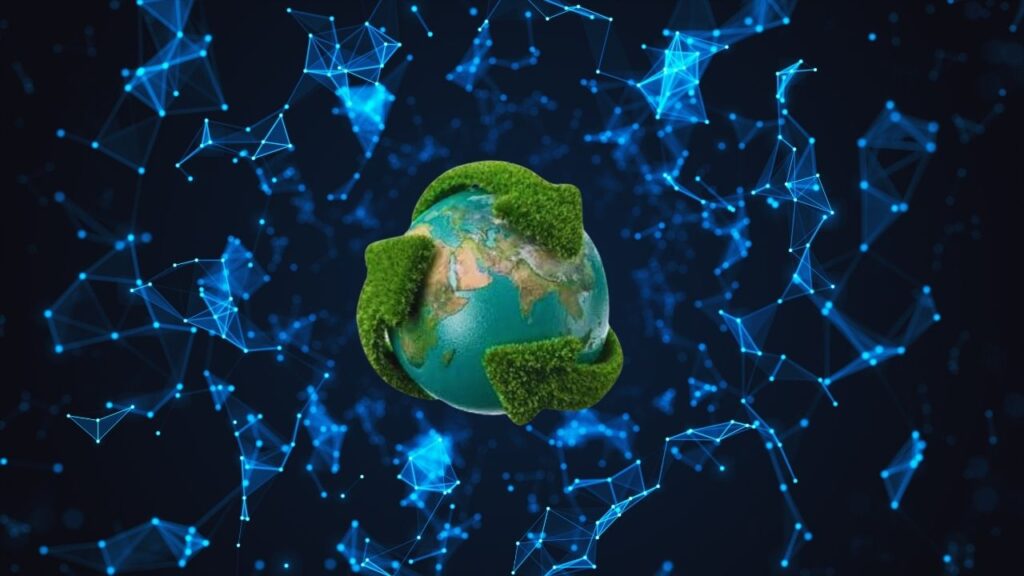5 Innovations That Could Make IT Environmentally Friendly: In today’s fast-paced digital world, sustainable technology is more important than ever. The IT industry, known for its massive energy consumption and electronic waste, is now turning the tide by adopting innovative solutions that protect our planet. This article explores five groundbreaking innovations in sustainable technology that are reshaping IT to be more environmentally friendly — making it easier for everyone, from tech enthusiasts to professionals, to understand how we can achieve a greener future through smarter tech.

Sustainable tech isn’t just a trend; it’s a necessity. With the global IT sector accounting for about 4% of worldwide carbon emissions, reducing its environmental impact has become urgent. Luckily, advances in data center design, circular hardware, AI-driven carbon tracking, smart energy management, and nanotechnology are leading the way.
Table of Contents
5 Innovations That Could Make IT Environmentally Friendly
| Innovation | Description | Impact | Career Opportunities |
|---|---|---|---|
| Green Data Centers | Energy-efficient, low-impact data centers using cooling innovations and waste heat reuse | Reduce data center energy use by up to 40% (IEA) | Data center engineers, sustainability analysts |
| Circular IT Hardware | Refurbished and recycled servers prolonging lifecycle and cutting e-waste | Reduces electronic waste by millions of tons yearly (EPA) | IT asset managers, hardware refurbishing experts |
| AI-Driven Carbon Accounting | Software platforms measuring and managing corporate carbon emissions | Enables companies to reduce emissions by 20-30% (CDP) | Data scientists, sustainability consultants |
| Smart Energy Management | IoT and AI optimizing energy in commercial buildings | Can cut building energy use by 25% (DOE) | IoT developers, energy managers |
| Green Nanotechnology | Nanomaterials improving solar cells, batteries, and water filters | Enhances energy efficiency and sustainability | Materials scientists, nanotech engineers |
Sustainable technology is transforming the IT industry, making it more environmentally friendly and energy-efficient without sacrificing performance. By adopting innovations such as green data centers, circular hardware, AI-driven carbon tracking, smart energy management, and green nanotechnology, businesses and individuals can reduce their environmental footprint and support a healthier planet. This journey towards sustainability is not only vital but full of exciting opportunities for innovation and career growth.
Understanding Sustainable Tech in IT
What is Sustainable Technology?
Sustainable technology, often called green technology, refers to innovations designed to reduce environmental harm while maintaining or improving performance. In the context of IT, this means creating hardware and software solutions that use less energy, produce less waste, and contribute to lowering carbon emissions.
Why is this important? The rapid growth of data and computing needs has made IT one of the most energy-intensive sectors. Data centers alone consume roughly 200 terawatt-hours (TWh) annually — nearly 1% of global electricity demand (IEA). Sustainable tech seeks to reduce this footprint by rethinking how we build, use, and recycle technology.
1. Green Data Centers: The Heart of Sustainable IT

Data centers are the backbone of the internet, storing and processing our data 24/7. Traditional data centers consume enormous amounts of electricity, mainly due to servers running constantly and energy-intensive cooling systems.
Green data centers use innovative techniques to slash energy use and emissions:
- Energy-efficient servers and processors: Modern chips are designed to consume less power while delivering high performance.
- Advanced cooling methods: Instead of traditional air conditioning, data centers increasingly use free air cooling or evaporative cooling, which rely on outside air or water evaporation to maintain optimal temperatures.
- Waste heat reuse: Excess heat generated by servers can be redirected to warm office buildings or nearby homes, preventing energy loss.
For example, Google’s data centers use AI to optimize cooling, resulting in a 40% reduction in energy usage for cooling alone.
2. Circular IT Hardware: From Waste to Resource
Electronic waste is a huge problem, with millions of tons discarded yearly, much of it containing toxic materials. The circular economy model offers a solution by encouraging reuse, refurbishment, and recycling.
In practice, this means:
- Refurbishing servers and devices: Instead of throwing away old equipment, companies clean, repair, and upgrade hardware for a second or third life.
- Using recycled materials: Manufacturers incorporate recycled metals and plastics to reduce the need for virgin resources.
- Recycled cloud services: Some cloud providers now run their infrastructure entirely on refurbished servers powered by renewable energy, lowering their carbon footprint significantly.
The Environmental Protection Agency (EPA) reports that electronic recycling helped divert about 1.9 million tons of e-waste from landfills in the U.S. in 2023.
3. AI-Driven Carbon Accounting: Measuring What Matters

Understanding and managing carbon emissions is crucial for sustainability. AI-powered platforms like Planted and others provide companies with tools to measure, analyze, and reduce their carbon footprint based on globally recognized standards like the Greenhouse Gas Protocol.
These platforms enable:
- Real-time emissions tracking across operations.
- Data-driven decision making for emission reduction strategies.
- Certification and reporting to meet regulatory and customer demands.
Studies show companies actively managing emissions through AI reduce them by 20-30% within the first few years.
4. Smart Energy Management: Making Buildings Smarter and Greener
Buildings consume about 40% of global energy, so optimizing their efficiency can significantly impact emissions. IoT sensors and AI systems allow for smart energy management, including:
- Monitoring real-time energy usage.
- Automating lighting, heating, and cooling based on occupancy.
- Predicting energy demand and adjusting systems dynamically.
The U.S. Department of Energy notes these technologies can reduce commercial building energy use by up to 25%.
5. Green Nanotechnology: Small Particles, Big Impact

Nanotechnology manipulates materials at the atomic level to enhance performance while reducing resource use. In sustainable IT, nanotech breakthroughs include:
- High-efficiency solar cells that convert more sunlight into electricity.
- Next-generation batteries with improved capacity, faster charging, and longer life.
- Water purification nanofilters that clean water with minimal energy consumption.
These innovations help power IT infrastructure sustainably and promote cleaner energy solutions. The National Nanotechnology Initiative reports that nanotech-enabled energy solutions could reduce global carbon emissions by up to 10% in the next decade.
10 Emerging Materials Set to Transform Electronics in the Next Decade
Photonics Revolution: How Light-Based Technology is Shaping Our Digital Future
From Silicon to Organic Semiconductors: The Future of Computing Explained
FAQs About 5 Innovations That Could Make IT Environmentally Friendly
Why is sustainability important in IT?
IT consumes significant energy and generates waste. Sustainable IT reduces environmental impact, conserves resources, and helps combat climate change.
How can individuals contribute to sustainable IT?
Simple actions like recycling old devices, supporting companies with green policies, and reducing unnecessary cloud storage can help.
What careers are available in sustainable technology?
Roles include sustainability analysts, data center engineers, IoT developers, AI specialists, and materials scientists.
Are green data centers cost-effective?
Yes, they reduce energy bills and operational costs while supporting environmental goals.
How reliable is AI-driven carbon accounting?
It provides accurate, real-time data for better decision-making and regulatory compliance, increasingly adopted by leading companies.



















